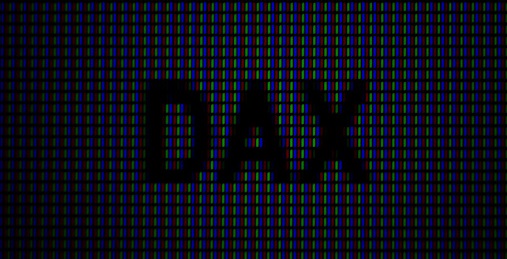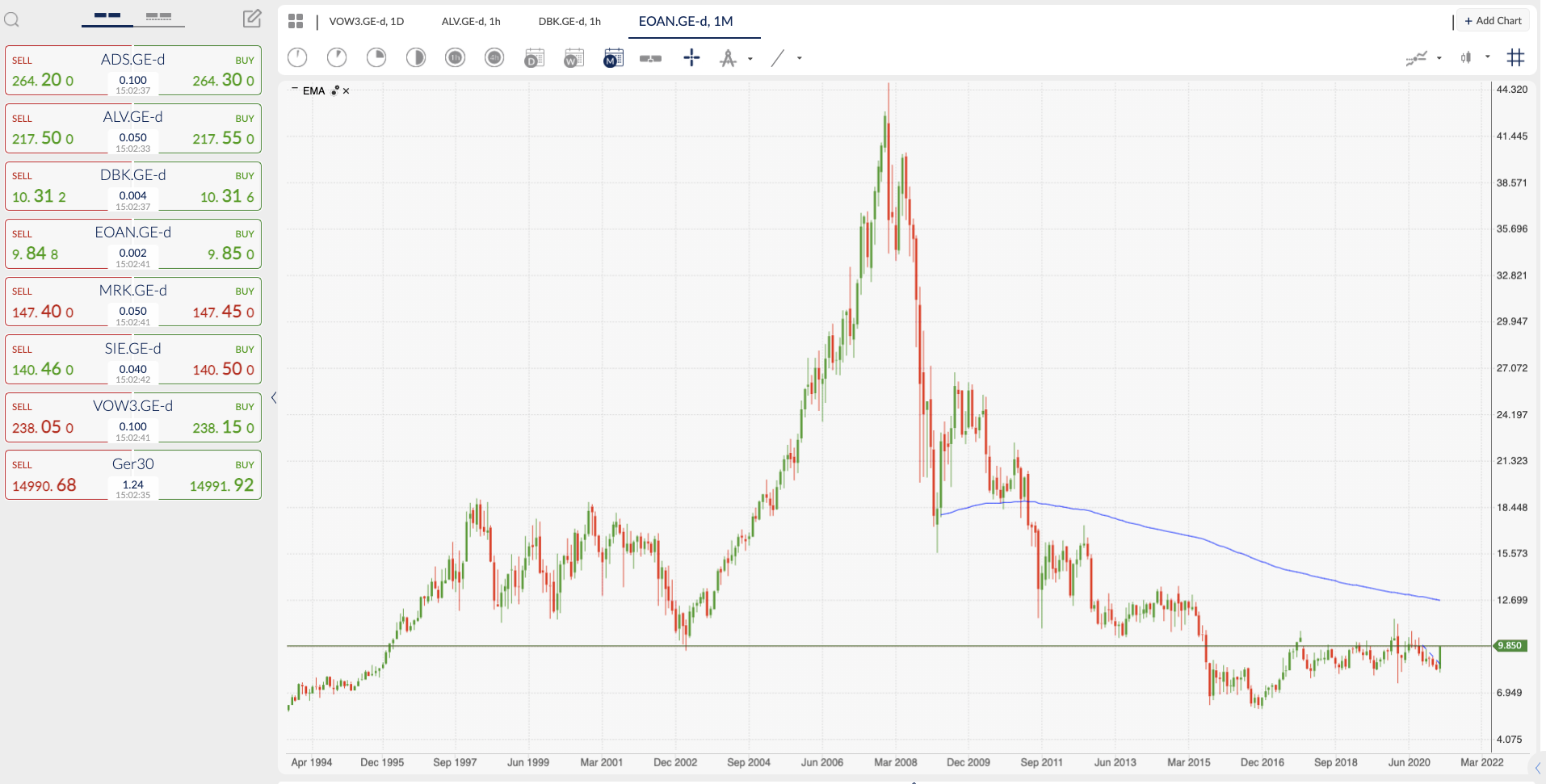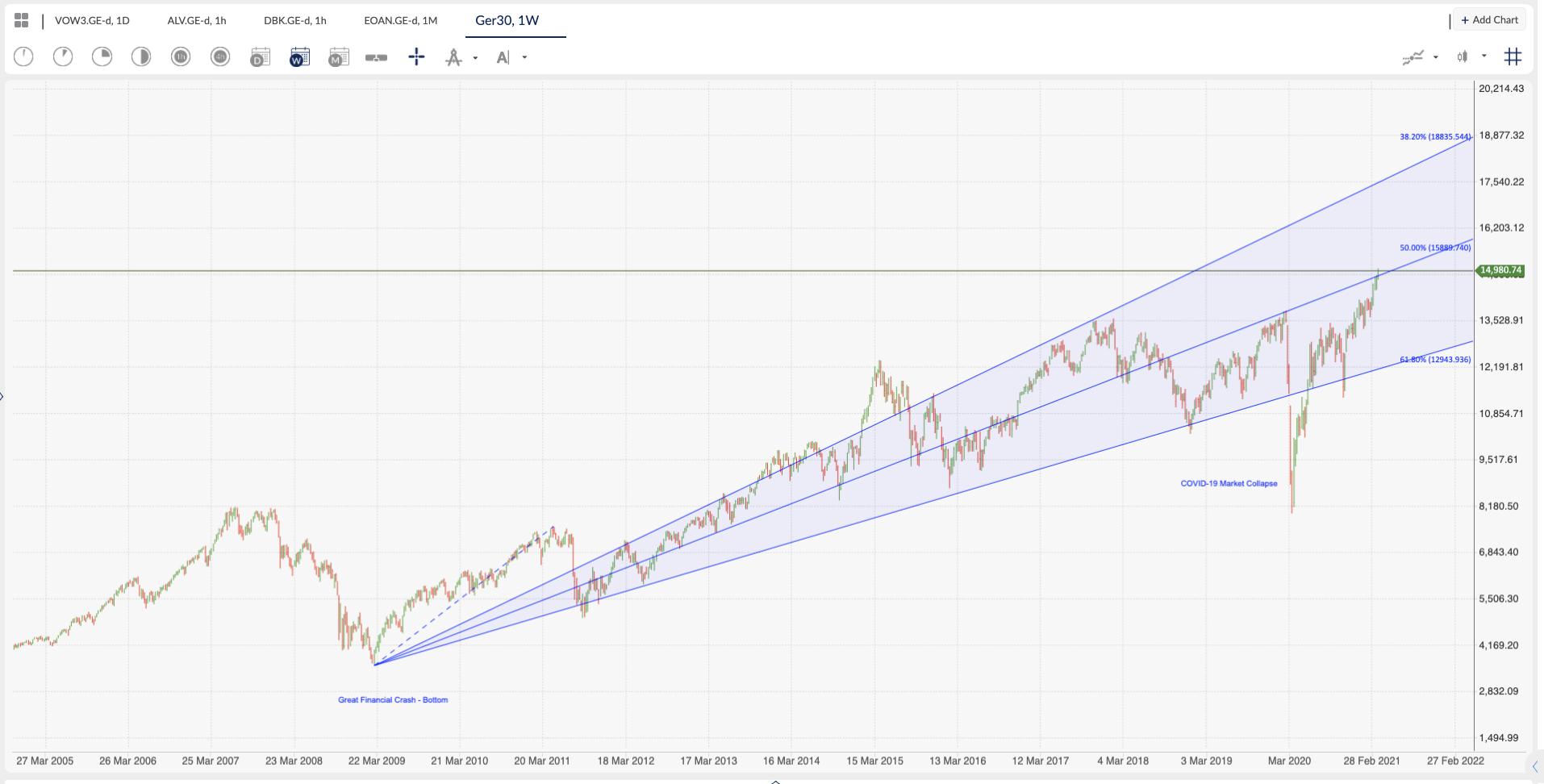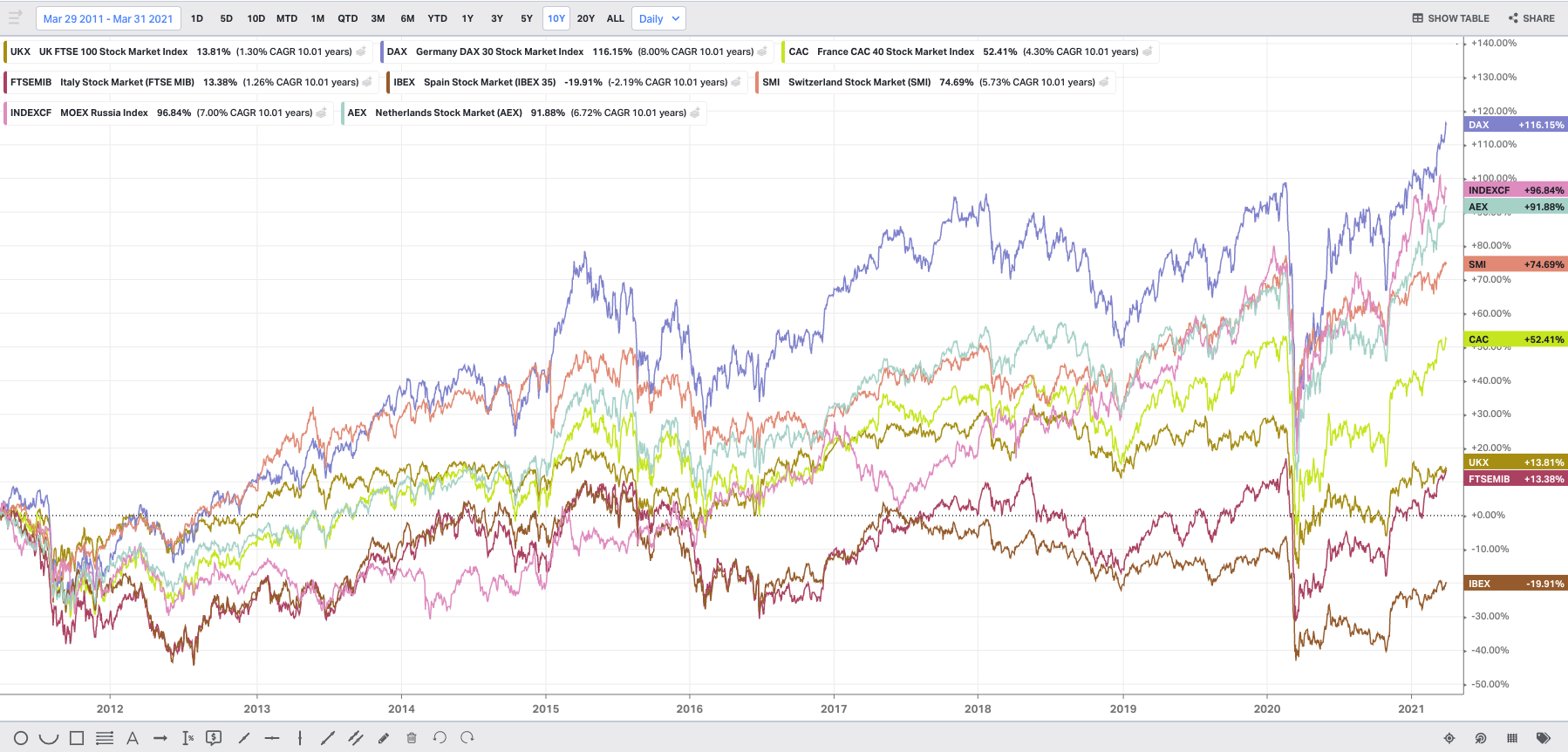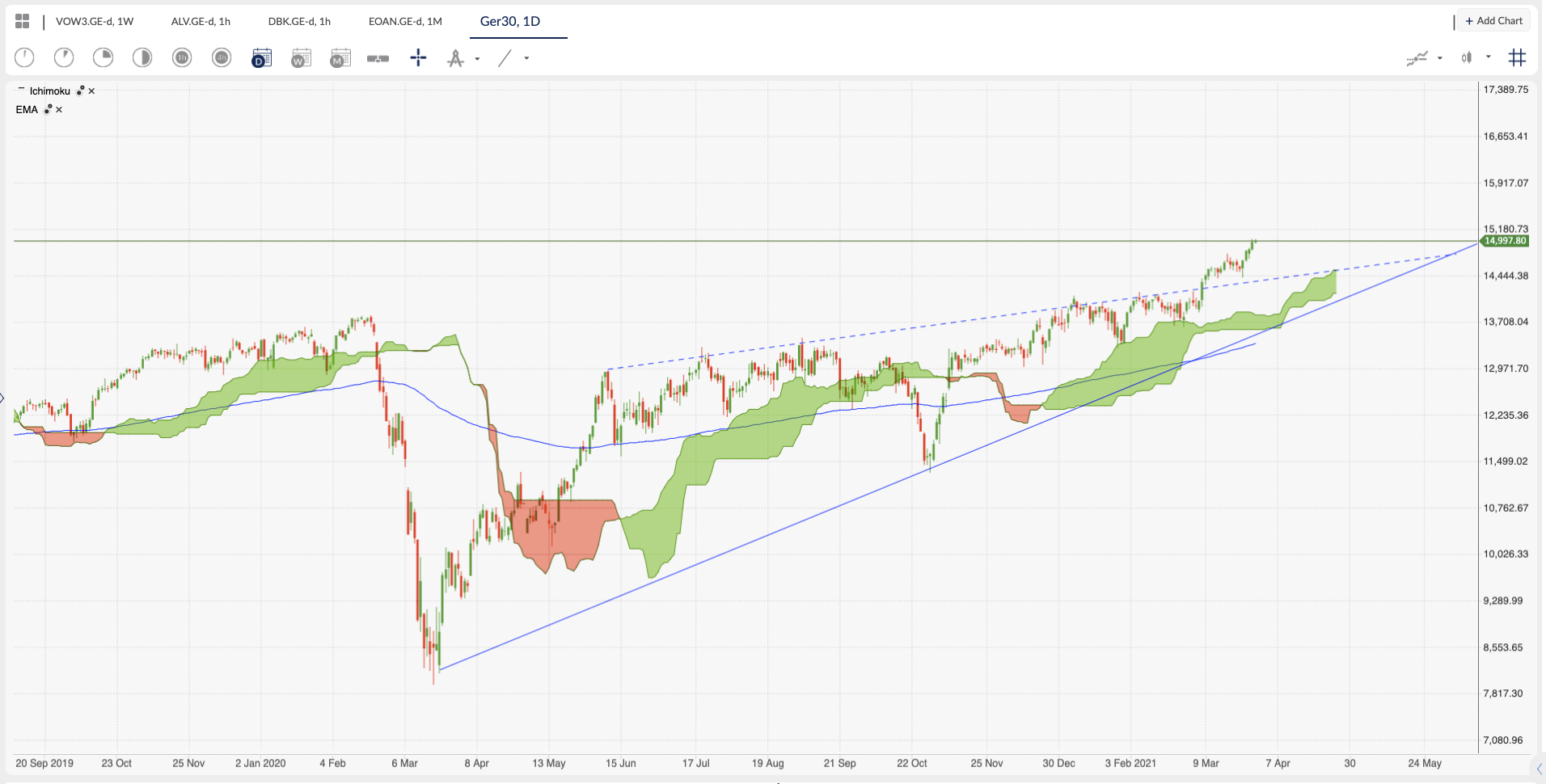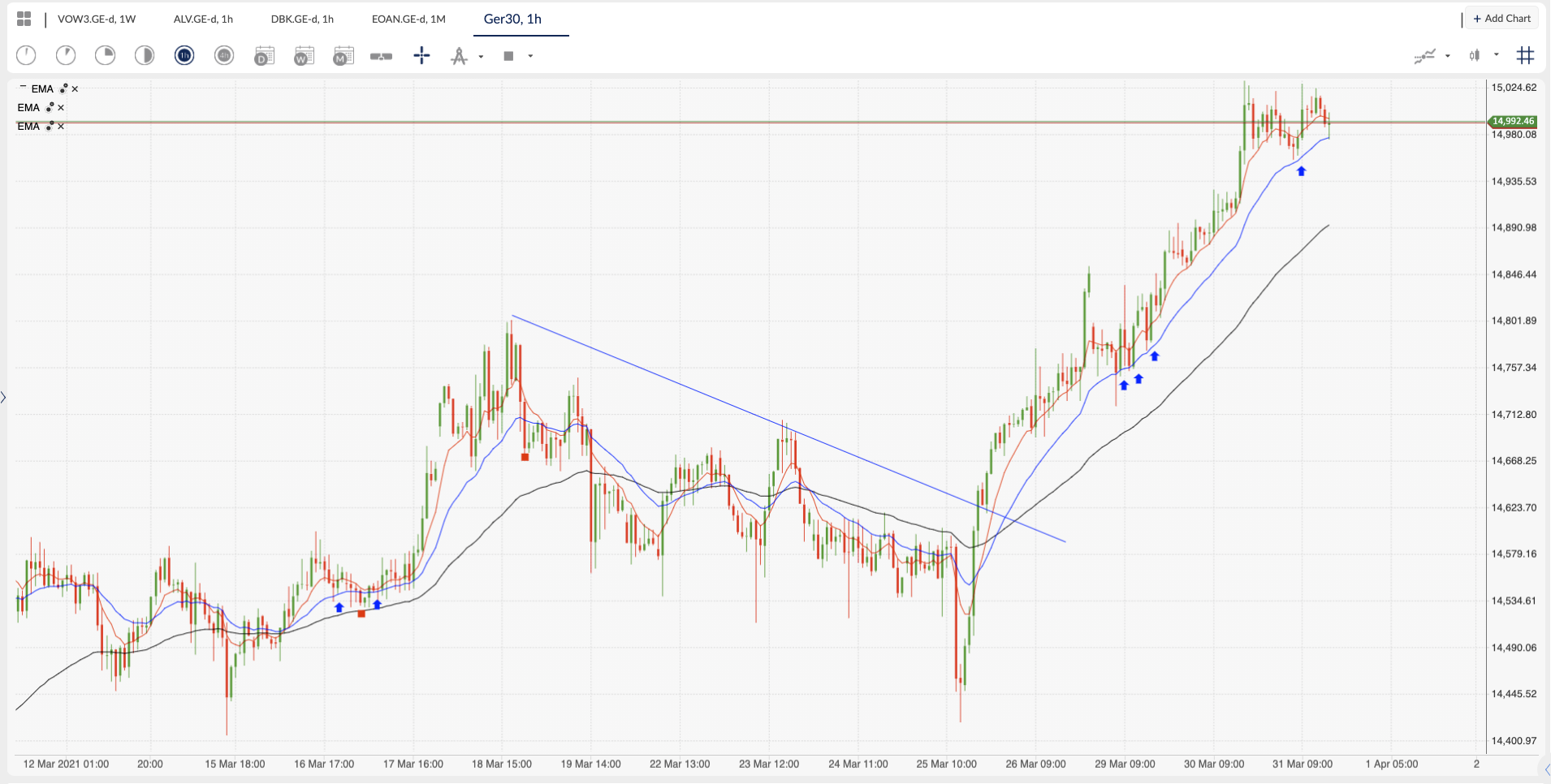March 2021 has seen the Deutsche Borse AG DAX rise by 8.8% as it attempts to regain the 2021 top spot from the Amsterdam Exchange, which has itself had a stellar 3-month trading period. The DAX is the European leader over the last decade and since the Great Financial Crash, it has been in an uptrend extending 300% higher from the 2009 lows.
The blue-chip index for the German stock market:
The DAX shows the performance of the 30 major and most liquid companies (so-called blue chips) that are listed on the regulated market of the Frankfurt Stock Exchange. The members are companies like Volkswagen, Siemens, Merck, E.ON, Deutsche Bank, Allianz, and Adidas.
The 30 DAX components represent around 80% of the total market capitalisation of listed companies in Germany, so unlike the DJIA or Nasdaq100 in the USA, it has a broad array of industries and therefore makes for a good bellwether indicator for economically how well Europe is doing.
The largest company in the DAX 30 is Volkswagen, which has a market cap of $166.88B with MTU Aero Engines trading as the smallest company within the index. On the 18th of March 2021, Volkswagen share prices touched and rejected €250 before consolidating around the €220-€237 price area. Volkswagen has plans to revolutionize the auto market with its EV platform and to fend off the German competition from the likes of Daimler.
A company like E.ON who is part of the Utility complex as it is an Energy provider has not reached its all-time highs and is starting from basically the lows of its share price. Back in January 2008 it has a share price around €43 but now trades just below €10 and still below the 2020 highs of €11.50 before the covid-19 market collapse. E.ON supplies electricity around Europe and in 2019 it was the first major energy provider to the UK to switch all of its 3 million British electricity customers entirely to renewable energies. With the shift towards net-zero emissions, it is companies like E.ON who may have the growth potential to keep pushing the DAX 30 a lot higher.
See real-time quotes provided by our partner.
So how high can the DAX 30 go?
If we use a Fibonacci fan from the 2009 GFC low to the first significant market peak we can extend out to present-day and beyond and see that the DAX is basically trending along 50% line and has a tendency during big market corrections to fall lower than the 61.8% and during extremely optimistic times poke above the 38.2% speed line. The reason I am using this indicator now is because the DAX is currently trading around its median line and is breaking to ATHs above this average. If there was to be a continued run-up by the start of 2022 the DAX could be 3000 points higher.
See real-time quotes provided by our partner.
As with all Indices, this is likely to happen but not necessarily by 2022, as the index is just an indicator of growth, or for some a reflection of where the excessively loose monetary policy by Central Banks ends up. The top 30 companies are all growth vehicles and if they fall behind, they are swapped out for a more productive one.
See real-time quotes provided by our partner.
With the continued spectre of COVID-19 and its variants disrupting the European nations, it is surprising to see how fast the DAX is climbing higher. The wall of worry has been truly scaled and now German business optimism is coming through in the data and stock pickers are looking through the lockdowns and to an inflationary period, with increased consumption and manufacturing. The Ifo Business Climate indicator for Germany continued to rise printing] 96.6 in March 2021, the highest level since June 2019.
Today’s data showed the German unemployment was reducing with the recent data beating expectations and last month’s data being revised more positively. European inflation rate data shows the last 3 months rising as economic activity increases, though it is on fragile ground still.
The Future of the DAX
After the UK’s referendum to leave the European Union the Frankfurt stock exchange and the London stock exchange were heavily rumoured to be in talks of a merger, which the bosses of London Stock Exchange (LSE) denied. London has been at the top of the pile for doing business in Europe and that included euro-denominated transactions.
On the 29th of March, the European Commission prohibited the proposed merger between Deutsche Borse AG and London Stock Exchange Group under EU merger regulation. Citing that the merger would have created a ‘de facto monopoly in the markets for clearing fixed income instruments.
Trading the DAX
The DAX 30 is a volatile trade, so you need a clear trade, that is in line with the larger time frame trend and you need to be prepared to get out as soon as the trade idea is invalidated.
We have established that the DAX is considered equal to the FTSE100 and that it has nothing but blue skies above for its share price so anyone looking to invest in the index will need to wait for some sort of correction.
See real-time quotes provided by our partner.
On the Daily chart the 200-exponential moving average (EMA) is a couple of thousand points away, so it would be quite the market shock should we get that sort of correction, and the Ichimoku cloud indicates that structural support is also at least 10% lower currently.
While we are in this clear-up trend, buying the dip is the usual method for getting in on a trade, and to do that you could go down to the intraday charts and see if building a position is possible.
See real-time quotes provided by our partner.
Currently on the H1 chart using 3 exponential averages, with periods 8, 21, and 60 are giving quite clear signals of intraday pullbacks when they line up stacked on top of each other. With the 8ema above the 21ema, this signals that the intraday momentum is bullish and as long as they are both above the 60ema you are trading in line with the daily time frame trend. Any close above the 8ema could be a decent signal and you can control your risk by placing a stop loss under the previous swing low or by closing out the trade if the H1 candle closed below the 21ema.
